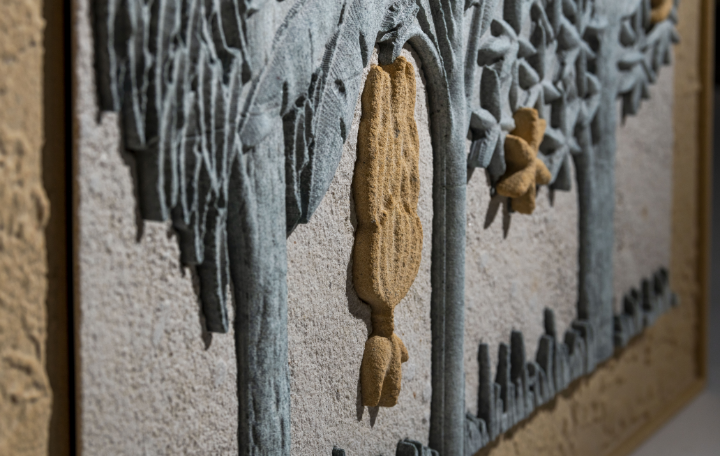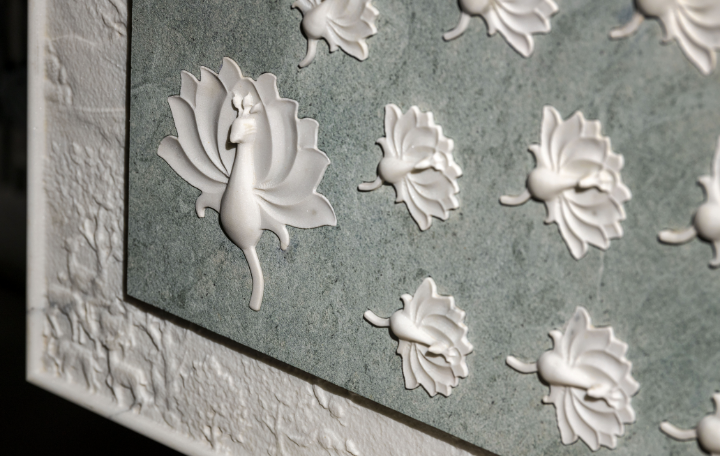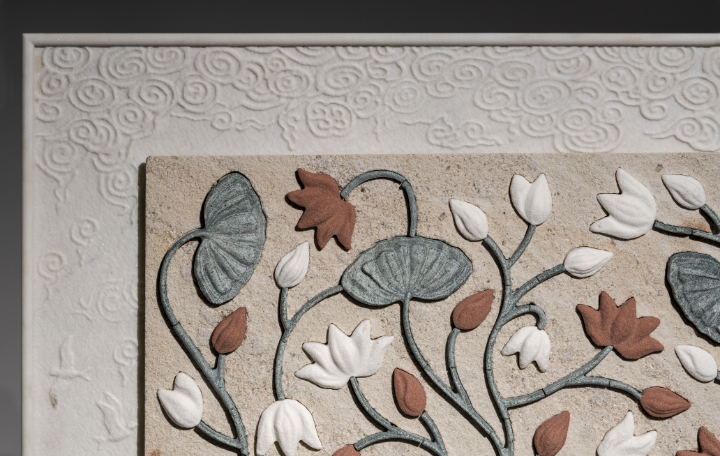Art
Pichwai
As much as I appreciated the intricacy of the Pichwai paintings, the sheer number of elements in each painting always overwhelmed me. I wanted to de-construct these intricate marvels and explore the deep metaphorical symbols of each element in its simple singularity. These sculptural murals celebrate "Charan"(feet), "Gaay" (cow), "Kamal" (lotus), "Chand"(moon), "Vriksha" (tree) and "Mayura" (peacock)
Materialised with Cecilia Gold Limestone, Taj White Marble, Agra Red Sandstone and Guatemala Green Marble
Charan
When we bend down before our gurus, it is not only a mark of submission of ego — it also facilitates the formation of a subtle transmission of energies.
Cow
A symbol of the earth. They provide so much nourishment- in the form of milk for food and dung for fuel - and need little in return.
Chand
Reflecting inner knowledge and the souls capacity for reflection and adaptation. The phases of the moon symbolize immortality and eternity, enlightenment.
When we bend down before our gurus, it is not only a mark of submission of ego — it also facilitates the formation of a subtle transmission of energies.
Cow
A symbol of the earth. They provide so much nourishment- in the form of milk for food and dung for fuel - and need little in return.
Chand
Reflecting inner knowledge and the souls capacity for reflection and adaptation. The phases of the moon symbolize immortality and eternity, enlightenment.
Mythological
Ancient
Metaphorical
Motifs
Singular
Diverse
![]()
The origin of Pichwai paintings dates back to roughly 400 years ago, created as a labor of love to depict the life of one of the Avatars of Lord Krishna, Shreenathji.
Ancient
Metaphorical
Motifs
Singular
Diverse
Pichwai
![]()
Vriksha
Symbolizing, aspiration and patience, a constant purpose and acceptance of the different seasons. Unlike the impatience of human desire which wants constant transformation.
![]() Mayura
Mayura
Symbolizes good fortune and royalty. The Mayura is also the vehicle for Lakshmi(goddess of wealth) and Saraswati(goddess of knowledge), representing immortality and resurrection.

Vriksha
Symbolizing, aspiration and patience, a constant purpose and acceptance of the different seasons. Unlike the impatience of human desire which wants constant transformation.
 Mayura
MayuraSymbolizes good fortune and royalty. The Mayura is also the vehicle for Lakshmi(goddess of wealth) and Saraswati(goddess of knowledge), representing immortality and resurrection.

Lotus
A symbol of human consciousness on the path to spiritual enlightenment, the lotus also signifies rebirth and purity. The lotus rises from muddy waters and blooms as a brilliantly pure, gorgeous flower.
A symbol of human consciousness on the path to spiritual enlightenment, the lotus also signifies rebirth and purity. The lotus rises from muddy waters and blooms as a brilliantly pure, gorgeous flower.
The origin of Pichwai paintings dates back to roughly 400 years ago, created as a labor of love to depict the life of one of the Avatars of Lord Krishna, Shreenathji.


